Perception and Post-Impressionism: The Artistic Vision of Virginia Woolf
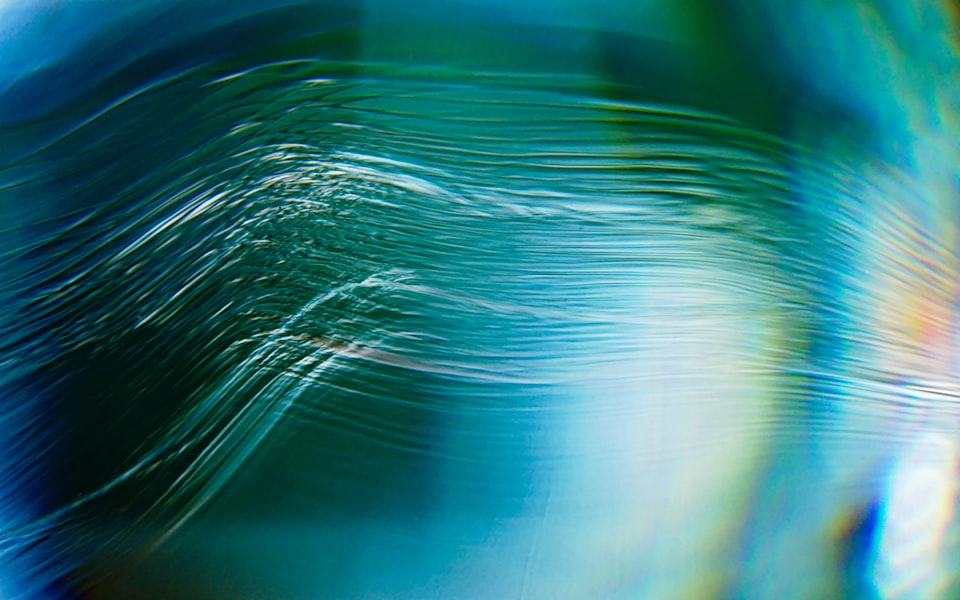
E.M. Forster noted about his friend Virginia Woolf that she “liked receiving sensations - sights, sounds, tastes - passing them through her mind, where they encountered theories and memories.” 1
Note: I was sorting through some old files and found this essay I wrote in my second year at university! I enjoyed re-reading it, and I thought it might have some relevance to 'inner worlds' so I'm sharing it here, twenty years later.
In Woolf's work the world is overwhelmingly seen before it is tasted or heard; her fascination with the visual, and with perception, is present in all her novels, especially some of her later works: Mrs Dalloway, To The Lighthouse, The Waves, and Between The Acts. It is these works that I shall look at because they are those in which Woolf is most concerned with presenting human consciousness, and in comparison they reveal a progression in Woolf’s literary use of certain aspects of visual art.
Woolf attempts to make visible intangible experience, such as feeling and thought, by reinterpreting the Post-Impressionist aesthetic theory of Bloomsbury in terms of literature. She recognized that language itself as a system is often inadequate to convey experience and reality is potentially unknowable: this is what drove her radical transformation of the novel form to accommodate these ideas. Colour, form, and perspective are used to illuminate the experience of human consciousness and its position in relation to the external world.
Woolf’s interest in the human interaction with the ‘external’ world through perception and emotion is made clear in the essay ‘Modern Fiction’, which Woolf first drafted in 1919, in which she expounds her belief that “the proper stuff of fiction” is not the plot, or tragedy or comedy favoured by “materialist” writers, but the response of the individual to the “myriad impressions”, the “incessant shower of innumerable atoms” that “shape themselves into the life of Monday or Tuesday.” 2
Woolf was clearly influenced in her youth by her brother Thoby’s reverence of G.E. Moore- her brother’s friends from Cambridge frequented the Stephen household, and Vanessa and Virginia quickly became part of their discussions and debates.
Moore’s principles of perception, laid out in Principia Ethica,were significant in Woolf’s attempts to express the intangible experiences of existence- she agreed with Moore (and intellectual predecessors Hume and Kant) that the objective world cannot be accessed through human perception, and so when considering an object, it is the emotional and psychological experience of the object and not the object itself that is perceived.
Moore’s principle of organic unity Woolf widened into a recognition of the unity between the self and the perceptual world, and found its aesthetic correlative in the doctrine of ‘significant form’ popularised by her Formalist friends. Woolf, however, “fused it into a literary gestalt in which feeling and form, theme and content, and aspects of self, time, and reality form a reciprocal and interdependent whole”.3
Woolf incorporated some of Moore’s ways of perceiving an object into her own modes of subjectivity, for example the distinction between individual and universal modes of perception, 4 and the importance of angle of vision in determining exactly what is seen. 5 The unity of human existence experienced through multiple individual consciousnesses became an abiding theme in her work, and she tried to replicate in prose the simultaneity of thought and perception, of the multiplicity of impressions.
This imperceptible existence behind the visible world was, for Woolf, something intrinsic, indescribable, unattainable through philosophical reasoning, but touched every so often by the imagination. Woolf thought that in her periods of mania she saw through to some kind of truth (while ill). Since this truth was inapprehensible in any direct way, she sought the truth of the “real” world behind the apparent world through art, and to her, Edwardian realist fiction seemed incapable of expressing this inner vision.
Woolf’s debate with the Edwardian realists is that they claimed, with no recognition of their shortcomings, that they had represented “reality” by looking in, somehow, from the outside. By failing to examine the subject-object relation that constructs the nature of that reality, the human perceptual interaction with the ‘outside’ world, they couldn’t produce any semblance of the experience of it.
By reversing the direction of vision, as Eric Auerbach 6 has observed, Woolf’s alternative realism deconstructs the internal/external border and reveals how the artistic frame (either the edge of the canvas or the form of the novel) constructs, rather than records, ‘external’ reality, in the same way that the apparatus of human perception (both mental and physical) is an integral part of how and what we perceive. This dissatisfaction with realism was paralleled by the Post-Impressionist rejection of representational art in favour of an expression of the interaction between human perception and emotion.
By mixing images, thoughts, impressions, visions, and sensations, and by presenting them as a consciousness she presents the fibres of human mental and emotional existence, after realizing- as did the Post-Impressionists- that realism, and representational art as a whole, would not suffice. She shared with her sister, Vanessa Bell, the desire to show non-physical experiences as formal realities, and to use a psychological spectrum rather than a literary symbolic system.
Virginia’s interest in the art of her sister is clear from the painterly analogies she uses for her own: “It is a very complex business, the mixing and marrying of words that goes on, probably unconsciously in the poet’s mind to feed the reader’s eye. All great writers are great colourists…” 7Sequence, however, cannot be entirely elided as the materiality of words forces us to place one word after the next, rather than being able to mix them like paints. The closest approximation of the painter’s non-linear mode of expression for the writer is the use of metaphor, in which sensations can be mingled and layered.
“As a writer, I feel the beauty, which is almost entirely colour, very subtle, very changeable, running over my pen, as if you poured a large jug of champagne over a hairpin.” 8 This image suggests Woolf’s dissatisfaction with linear narrative as a mode of expression for her experience of the world. As words are necessarily limited in their descriptive power of, for example, colours, by their need for sequence, Woolf’s descriptions were also restricted by a need for the structure of a novel to be determined by a plot constructed of sequential events. Woolf dealt with this dissatisfaction with linear narrative through the use of free indirect speech in her 1925 novel Mrs Dalloway.
Still, he thought, yawning and beginning to take notice – Regent’s Park had changed very little since he was a boy, except for the squirrels – still, presumably there were compensations – when little Elsie Mitchell, who had been picking up pebbles to add to the pebble collection which she and her brother were making on the nursery mantelpiece, plumped her handful down on the nurse’s knee and scudded off again full tilt into a lady’s legs. Peter Walsh laughed out. (p.64)
The continuous indeterminacy and haze of subjectivity produced by the switches from character’s interior mental/emotional world to the exterior world in which they exist comes closer to the view of life as a “luminous halo” 9 recommended by Woolf in ‘Modern Fiction’.
Through her use of free indirect speech, Woolf portrays layers of experience, the very texture of collective human existence, and breaks down narrative-sequence in favour of an evocation of actual thought. She expresses the simultaneity of several acts or states through the use of present participles. “Poor Peter, thought Sally. Why did not Clarissa come and talk to them? That was what he was longing for. She knew it. All the time he was thinking only of Clarissa, and was fidgeting with his knife.” (p.195)
A subject-verb action is transformed by the use of a present participle into an adverbial or adjectival phrase, which softens human activity into contemplation, allowing for a sense of simultaneity of acts and states. The Regent’s Park evoked in the novel is described with a clear sense of the co-existing currents of narrative and consciousness that the main narrative follows for a while and then discards.
Virginia Woolf creates a rhythmic, wave-like form of undulating passage as in music, where the structure of parts within an individual movement is a continuous flow rather than a series of stops and starts, or as in a painting where the eye is led from place to place in a non-linear fashion.
However, Woolf at this point has not entirely disregarded the importance of linear narrative plot, as the sensual intensities of the novel are tamed by ‘motivation of the device’ to borrow a term from Russian Formalism, such as the immediately post-war setting and the heat wave, which are used to justify or rationalise the intense experiences of colour, form and perspective.
June had drawn out every leaf on the trees … Arlington Street and Piccadilly seemed to chafe the very air in the park and lift its leaves hotly, brilliantly, on waves of that divine vitality which Clarissa loved. (pp.4-5)
Something so trifling in single instances that no mathematical instrument … could register the vibration; yet its fullness rather formidable and in its common appeal emotional; for in all the hat shops and tailors’ shops strangers looked at each other and thought of the dead; of the flag; of Empire….For the surface of the agitation of the passing car as it sunk grazed something very profound. (p.16)
Both experiences are expressed using sea imagery: “waves of that divine vitality” and “surface” and “sunk” suggesting both depth and surface movement- flux and flow, currents and emotional undertow.
Mrs Dalloway is the first of her novels in which Woolf uses only the pattern of psychological relationships between the characters for its design- broadly a simultaneous emotional movement of ascent and descent, of vitality and despair which culminates in Septimus’ suicide and Clarissa’s party. This simultaneity is present when viewing a work of art, in that although the eye is led to focus on certain parts of a painting, it can be appreciated as a whole.
It is the emotions and perceptions of the novel’s characters which create form, and this can be linked to the concept of significant form which for Roger Fry (a great friend of Virginia’s) was not only a marker of aesthetic quality, but referred to emotional relationships within the work of art, as the significance of the form lay in the viewer’s emotional response to it. 10 Woolf’s subsequent novels, except Orlando, would make use of this interior emotional design.
If Mrs Dalloway approaches in literature the experience of viewing a painting, then To The Lighthousemay be viewed as a literary triptych, with its symmetrical (and no doubt ‘significant’) form and use of frames to create structure. It is a more complex work than Mrs Dalloway,and the most closely linked to the visual arts of all Woolf’s works, not least by the presence of the Post-Impressionist painter Lily Briscoe. Woolf’s manipulation within her text of form, perspective and especially colour, provides the best example of how the Post-Impressionism of Bloomsbury was transmuted by Woolf into literature.
At the heart of Post-Impressionism was the use of oppositional planes of colour, rather than chiaroscuro, a trait found in the work of Cezanne, and a position of interest for Woolf. There is a great body of critical work on the subject of colour in To The Lighthouse, some of the most insightful being the essays of Jack Stewart 11 who shows that rather than a strictly literary system of colour symbolism, Woolf creates a spectrum of “being refracted through self”, 12 an excellent description of what Woolf attempts to represent- the unity of the human condition experienced through a multitude of separate consciousnesses.
Certain colours do become associated with particular characters and traits, but this kind of emotional equivalence is not a simple symbolic equation of colour with personality. The colours mingle and mix, are part of the landscape as well as of the people and are as significant in their relational effects as when they are isolated. Woolf uses colour relationships to delineate a web of human interactions.
In this “geometry of colour” which is so striking in To The Lighthouse, Mr and Mrs Ramsay are at opposite ends of the spectrum, with the infrared of intellectual insight contrasting with spiritual vision in ultraviolet. Reddish browns form a masculine complex, associated with Mr Ramsay through the red-hot pokers, geraniums, and hedge, with James “all red and ermine”. Paul Rayley’s desire blazes red, and Charles Tansley’s “red, energetic, shiny, ants”.
In opposition to the red hue of male egotism, a greater range of colours form a feminine/intuitive plane- the blue of the sea, of distance and transcendence, spirituality and memory. Green is the tint of illusion, creativity, and imagination, which is why it becomes associated with Lily, and her fellow artist Carmichael is associated with yellow, meditation, aestheticism, intoxication. Mr Ramsay’s brilliant egotism (red) can be seen as halfway between Mr Carmichael’s detached aestheticism (yellow) and Mrs Ramsay’s spiritual depth (blue).
When Lily fears the red blaze of Paul Rayley’s passion for Minta she is recoiling aesthetically as well as psychologically because red against a green background tends to overpower it. However of all the pairs of complimentary colours, red and green are most equal in intensity, and green can be made more vivid by proximity to red. The green on Lily’s canvas may suggest her attempt to combine aesthetic and spiritual qualities (yellow and blue) in opposition to masculine egoism (red): Lily desires spiritual (her inclination towards blue and longing for Mrs Ramsay) and aesthetic distance, implied by Carmichael’s unintrusive presence.
This is a much simplified summary of the complex emotional and chromatic nexus in the novel, and Stewart, correctly identifies “the critical difficulty of distinguishing between plastic and symbolic values in the novel”. 13 A colour cannot be said to “mean” anything- it may bear certain associations but they are not the colour itself. Woolf cannot achieve the same use of colour as a painter, that is, “plastic” colour, but her exploitation of “a subtle interrelation between sensation and idea” 14 present when colours are transformed into words is masterful.
Chiaroscuro is present in the novel, but light/dark relationships seem to be set up in opposition to colour relationships: Stewart aligns Mrs Ramsay with the colours purple and blue in To The Lighthouse, and indeed she is associated with them, e.g. “blue ribbon of the garter” and “wild violets”(p.20) and James sees her in “a blue light”, but she also envisages herself as a “core of darkness”(p.70).When Lily is talking about her painting with Bankes, Mrs Ramsay is a “shadow” (p.60).
Jane Goldman associates chiaroscuro with patriarchy, and she aligns Lily’s Post-Impressionism with Woolf’s use of light and shadow as a form of ‘feminist prismatics’. 15 In Goldman’s reading of the text, Mr Ramsay’s intellect is a masculine light “his own little light would shine, not very brightly, for a year or two, and would then be merged in some bigger light, and that in a bigger still”(p.42) and Mrs Ramsay is cast in the shade. However, in Lily’s painting when she has no need to defend her vision to Bankes, the shadowy “core of darkness” turns purple.
Mrs Ramsay’s conflicting connections with blue and purple, and also darkness and shadow can be reconciled, as Stewart demonstrates; Mrs Ramsay’s unique combination of radiance and shade is in concordance with the tonal range of blue from “bright steel to soft purple”(p.35) and blue-white and blue-black. Cirlot’s Dictionary of Symbolsdescribes blue as “darkness made visible”, 16 and Faber Birren in Creative Colour, explains that blue “is the only colour which can be seen as a close neighbour to and essentially akin to both dark and light…” 17
Colour also illuminates shape- people (Mrs Ramsay), and flowers (the red-hot pokers) In his book, Art, Clive Bell declares the distinction between colour and form to be false, and explains that “you cannot conceive a colourless line or a colourless space; neither can you conceive a formless relation of colours.” 18 Colour comprises form and also structure, both in the work of Clive and Vanessa Bell and their colleagues, and in that of Lily Briscoe: “She saw the colour burning on a framework of steel; the light of a butterfly’s wing lying upon the arches of a cathedral.” (p.55)
To The Lighthouse is a highly Formalist work in the neat symmetry of its structure. The dominant forms in the book are parentheses- both square brackets, creating a framing effect, and round brackets in the shape of an arabesque- in this way the beginning and ending of the novel ‘bracket’ the middle section Time Passes.
The proliferation of parentheses reflects a wider interest in the novel in framing –not only the artistic selection of space but also the way our perception of reality is ‘framed’ by our subjective self. In Kantian terms, we can never access the thing-in-itself because if we perceive it in any way it is the thing-for-us, framed by our thoughts and emotions. The way in which Woolf partitions her novel arranges it so that The Window forms a frame with The Lighthouse, making Time Passes, the thing that is framed and bracketed, the “centre of complete emptiness” (p.193) which Lily sees in the garden, the unseen heart of things. The Time Passes passage represents pre-linguistic sensation and impression which is accessed through the narrative only, and perceived through the ‘frame’ of the novel.
Woolf skilfully uses framing effects like those of visual art to explore subject-object relations and the disparity between what may be and what we can perceive, by framing potentially unrepresentable sensations and impressions. She transforms techniques and effects used in visual art, i.e. that of the physical frame, and of ‘framing’ in composition, into a literary equivalent: typographical parentheses, but also the shape of the novel itself and the forms contained in its imagery.
The ‘arabesque’ is a useful example of the latter- Lily sees the garden as “curves and arabesques flourishing around a centre of complete emptiness” (p.193). The word occurs frequently in To The Lighthouse (as well as in Roger Fry’s art criticism) and as well as the shape’s resemblance to round brackets, much of the movement in the novel is curved- the strokes of Lily’s paintbrush, the boat in the bay, recalling another favourite image of Woolf’s: the wave.
Waves and sea imagery in To The Lighthouse, and the way in which many things on dry land many things have a wavering quality Avrom Fleishman identifies as “connected with the rhythm of reality itself by its normative position in other images.”19; Lily sees the “wave and whisper” (p.193) of the garden as no one else does, because of her artistic mode of subjectivity. She is aware of the “perspectival variability” 20 of objects and can imaginatively extend her view to consider other perspectives, like the variance between cliff-top and water-level needed to complete her painting:
“…the waves shape themselves symmetrically from the cliff top, but to the swimmer among them are divided by steep gulfs and foaming crests …Down in the hollow of one wave she saw the next wave towering higher and higher above her.”(p.172)
Woolf mingles the rhythm of the creative process with the rhythm of the waves to demonstrate Lily’s connection with the underlying forms of the apparent world, though she, like everyone else, can only approach the imperceptible through art.
Woolf’s novel The Waves was continuous with her desire to replace the focus of “materialist” Edwardian fiction with some inner vision- the soliloquies of the six main characters evoke the undercurrent of the subconscious. Bernard, the story-teller, eventually comes to reject narrative for “there is always deep below it … a rushing stream of broken dreams, nursery rhymes, street cries, half-finished sentences and sights – elm trees, willow trees, gardeners sweeping, women writing – that rise and sink.”(p.219)
The sense of fragmentation and the “half-finished sentences” anticipate the silences and difficulties of expression in Between The Acts. The “street cries” here have no semantic content, they are just sounds, and the probably nonsensical “nursery rhymes” recall the snatches of rhyme and songs that make up part of Isa’s narrative in the later book, and this creates a sense of the pre-linguistic, the inexpressible, and the inadequacy of language to describe these emotional experiences.
It is the “sights” of the subconscious that are emphasised through the use of parenthesis and the increasing numbers of syllables in each image which quickens the pace. The rhythm is then broken off, followed by a pause on the image of the woman writing, and the phrase “rise and sink” that describes the movement of the sentence itself.
Woolf’s literary use of the techniques of visual art was part of a greater interest in perception and the imperceptible, what was there and could not be seen, or what could be experienced but not represented. The fact that the reality behind the apparent world is beyond sensual apprehension pushes it beyond aesthetic form. Art gives form only to the contradiction that truth cannot be represented, not the truth itself, which must be evoked through the mere record of impression and sensation.
In The Waves Bernard sees a fin of a porpoise in the water on the horizon and notes it under F. “Visual impressions often communicate thus briefly statements that we shall in time to come uncover and coax into words”(p.202). The sentence encapsulates a theory of writing and the relation of language to perception, suggesting that there is a human experience that exists before we can put our experience into language.
Roger Fry came to believe, later in life, that there was a great power of unconscious in art, and that the ‘primitive’ art could have great power and a ‘purity’ that might exist beyond what can be created by artists too burdened by ideas and language. Woolf, in language, is interested in suggesting the vibrancy of the pre-linguistic sensation or impression. This is what we find described in the interludes in The Waves and in “Time Passes” in To the Lighthouse: a covering of language for the absence of all human intercourse.
At the end of The Waves, Bernard casts off “this veil of being,”(p.253) and asks: “What does the central shadow hold? Something? Nothing? I do not know”(p.251). Importantly, he feels that he has pierced a silent world without the protection of art or language, “a new world ... without shelter of phrases”(p.247).
Woolf wrote in her diary, concerning The Years: “I think I can see how I can bring in interludes- I mean spaces of silence.” 21 She again referred to “silent spaces” in her criticism of a short story by Turgenev. 22 For Woolf, space and silence were closely connected, and she used them in a ‘painterly’ way as aspects of form and meaning. Just as the blank space on a canvas is a necessary part of the composition, the silences in her novels are a crucial part of what is said, and this is nowhere more evident than in Between The Acts.
He said (without words) “I am damnably unhappy.”
“So am I,” Dodge echoed.
“And I too,” Isa thought.
They were all caught and caged; prisoners; watching a spectacle. Nothing happened. The tick of the machine was maddening. (pp.112-3)
Between The Actsis a novel supremely concerned with perspective and viewpoint, especially that of the manipulated gaze of the pageant audience- Woolf’s interest in perspective increased alongside her interest in the European political situation, and this interest in perspective mirrors both Woolf’s move away from the Post-Impressionist aesthetic rejection of perspective and from Bloomsbury’s artistic disinterest in the increasing political conflict preceding the Second World War.
Roger Fry disdained perspective in art, claiming it was a “means of ascertaining facts,” and adding “the question of art begins where the question of fact ends.” Her irritation with the Formalist painters is expressed in a letter of 1936, in which she describes her colleagues “looking at pinks and yellows, and when Europe blazes all they do is to screw up their eyes and complain of a temporary glare in the foreground. Unfortunately politics get between one and fiction.”23
Between The Acts also makes use of framing effects; most strikingly as the pageant ends with the shattered reflection of the audience, repeating the theme of multiplicity within unity- the mirrors show individuals, but they are part of the audience, as each mirror is like a splinter of a giant looking glass. In this way the audience finds itself disconcertingly inside a frame, and Woolf overturns the Edwardian realist idea that one can view art or life from “outside” the frame.
There is use of framing within the narrative, with multiple stories (those in and of the pageant and the people involved in it) framed by the novel itself- this un-Formalist authorial disunity in the novel is pronounced in the final paragraphs when Isa reflects on her own life as a story: “Surely it was time someone invented a new plot, or that the author came out from the bushes” (p.138).
Woolf’s last novel reveals a rejection of Formalism and abandonment of the artistic vision evident in To The Lighthouse, the psychological undercurrent like that verbalized in the highly imagistic soliloquies of The Waves remains unspoken. Much of the pageant is evoked through scraps of phrases, a few lyrics carried on the wind, and as Isa remarks “Don’t bother about the plot: the plot’s nothing”(p.60)
The dominance of silence forces the gaze inwards and away from external events that might make up a plot, even the artistic rendering of unconscious thought is rejected, and eventually the sound of the cows lowing is all that is there on the empty stage, it is primal noise, wordless and artless. In this way Between The Acts is related to the Interludes of Woolf’s previous novel, The Waves, and the Time Passes section of To The Lighthouse. It peels away narrative and art and attempts to represent in some fashion the pre-perceptual, pre-linguistic world of things-in-themselves.
The artistic vision of Virginia Woolf – vision in the sense of sight, and in the sense of something imagined, an inner vision – changes throughout her work: in Mrs Dalloway, she begins to move away from the narrative linearity of “materialist writers” into a form determined by emotion and a vivid sensory description of the world within the novel, as experienced by the myriad consciousnesses the narrative passes through. To The Lighthouse represents the peak of Woolf’s form of literary Post-Impressionism, and builds on the emotional design of Mrs Dalloway with its neat symmetrical structure, use of framing effects, complex “geometry of colour”, and switches in angle of vision and perspective.
While for most of these first two novels the emphasis is on the human emotional and perceptive interaction with the ‘external’ world, the central section of To The Lighthouse, Time Passes, marks an increasing interest for Woolf in the essentially imperceptible world of things-in-themselves, and the proximity to this state of the pre-linguistic and pre-artistic. This interest is manifest also in the interludes of The Waves, in which the narrative is disembodied. In the novel, deep emotional responses to experience are represented pictorially, in the soliloquies of the main characters, and Bernard, the writer, eventually rejects narrative as an inadequate means of expression for the multi-sensory experience of living.
Between The Acts seems to bear through this rejection of narrative and the expressive power of art, as the pageant is for the most part swept away by the wind, the plot becomes irrelevant, and what is unsaid, in the silences literally between the acts is the most essential. The final image of the pageant, is crucially, ourselves, as all that we can ever truly perceive- nothing else is accessible to us.
In her introduction to The Waves, Gillian Beer talks about what it is that Woolf helps us to discover:
“Something permeable, something intimate, something closer to our silent experience than fiction usually permits. And something that seeks through language to reach the habitual states of being where language hardly counts, as Bernard, the professor-writer among the characters at last perceives, ‘Blue, red even – they distract, even they hide with thickness instead of letting the light through.’” 24
Sensation, impression, visual art and language are fused in Woolf’s work. She attributes significance to the act of mediation itself, focusing on the field of consciousness in flux, and refusing to draw a division between trivial or intense states of consciousness in her artistic illumination of the experience of human existence.
BIBLIOGRAPHY
Dalgarno, Emily, Virginia Woolf and the Visible World (Cambridge 2001)
Fleishman, Avrom, Virginia Woolf: A Critical Reading (London/Baltimore John Hopkins University Press 1975)
Fry, Roger, Vision and Design1920 (Harmondsworth : Penguin 1961) Cezanne: A Study of His Development1927 (NY Noonday 1960)
Gillespie, Diane, ed. The Multiple Muses of Virginia Woolf, (Columbia: University of Missouri Press, 1993)
Goldman, Jane, The Feminist Aesthetics of Virginia Woolf: Modernism, Post-Impressionism and the Politics of the Visual(Cambridge 1998)
Lee, Hermione, Virginia Woolf (London:Vintage 1997)
Minow-Pinkney, Makiko Virginia Woolf & The Problem of the Subject(London: Harvester Press, 1987)
Raitt, Suzanne, Virginia Woolf’s To The Lighthouse(London: St Martin’s, 1990)
The Icon Critical Guide to Virginia Woolf : To the Lighthouse, The Waves(ed) (London: Icon, 1997).
Reed, Christopher, “Through Formalism: Feminism and Virginia Woolf’s Relation to Bloomsbury Aesthetics” 20thCentury Literature38 1992: 21-41
Richter, Harvena, Virginia Woolf: The Inward Voyage(Princeton University Press 1970)
Stewart, Jack F, “Colour In To The Lighthouse” 20thCentury Literature31 1985: 438-58 “A Need of Distance and Blue: Space, Colour, and Creativity in To The
Lighthouse” 20thCentury Literature Spring 2000 http://www.findarticles.com/cf_0/m0403/1_46/63591265/p1/article.jhtml
Woolf, Virginia, Mrs Dalloway, (London: Penguin 1996, first published 1925)
To The Lighthouse, (London: Grafton Press 1977, first published 1927)
The Waves, (London: Penguin 1964, first published 1931)
Between The Acts, (London: First Ace Books, 1961, first published 1941)
A Writer’s Diary, (London: Grafton 1978, first published 1953)
Collected Essays, IV Vols (London: Hogarth Press, 1966-7, first published 1960)
ENDNOTES
1 E.M. Forster, Virginia Woolf (New York, 1942), pp.6&7
2 Virginia Woolf, “Modern Fiction” Collected Essays, II, pp.110,106.
3 Harvena Richter, Virginia Woolf: The Inward Voyage (Princeton University Press, 1970) p.20
4 G.E. Moore, Philosophical Studies (New York, 1922) pp.31-96
5 G. E. Moore, Philosophical Studies (New York, 1922), pp. 185-96
6 Eric Auerbach, Mimesis: The Representation of Reality in Western Literature, trans. Willard R. Trask. (Princeton: Princeton University Press, 1953)
7 Collected Essays, II, p.22
8 Woolf in Goldman Feminist Aesthetics p.138
9 Virginia Woolf, Essays, II p.114
10 Roger Fry, Vision and Design (London: Chatto and Windus) p.294
11 Jack F. Stewart, “Colour in To The Lighthouse” 20th Century Literature 31 1985. “A Need of Distance and Blue: Space, Colour, and Creativity in To The Lighthouse” 20th Century Literature Spring 2000
12 Jack F. Stewart, “Colour in To The Lighthouse” 20th Century Literature 31 1985 p.440
13 Ibid, p.454
14 Ibid, p.454
15 Jane Goldman, The Feminist Aesthetics of Virginia Woolf: Modernism, Post-Impressionism and the Politics of the Visual (Cambridge, 1998)
16 J.E. Cirlot, A Dictionary of Symbols, trans. Jack Sage (New York: Philosophical Library, 1962) pp.51-52
17 Faber Birren, Creative Colour (New York: Reinhold, 1961) p.96
18 Clive Bell, Art (London, 1914) pp.7-8
19 Avrom Fleishman, Virginia Woolf: A Critical Reading (Baltimore: John Hopkins University Press, 1975) p. 104
20 Ibid.
21 Diary, July 17, 1935
22 “A Glance at Turgenev”, TLS, December 8, 1921, p.813.
23 Woolf in Diane Gillespie, ed. The Multiple Muses of Virginia Woolf, (Columbia: University of Missouri Press, 1993) p.47
24 Virginia Woolf, The Waves (London: Vintage, 1991)
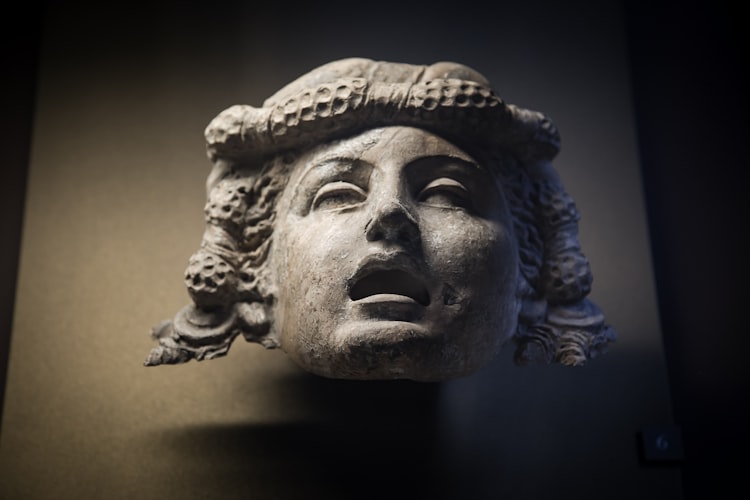
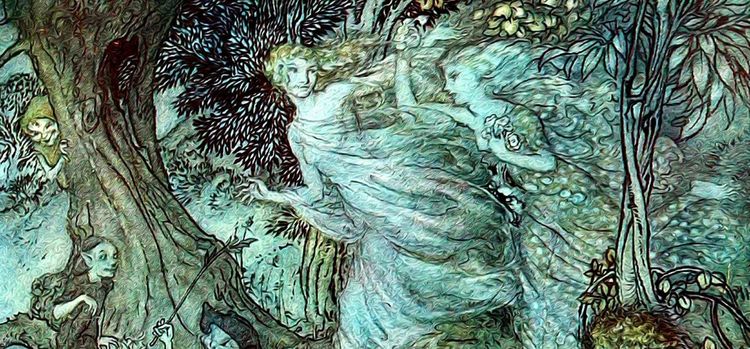
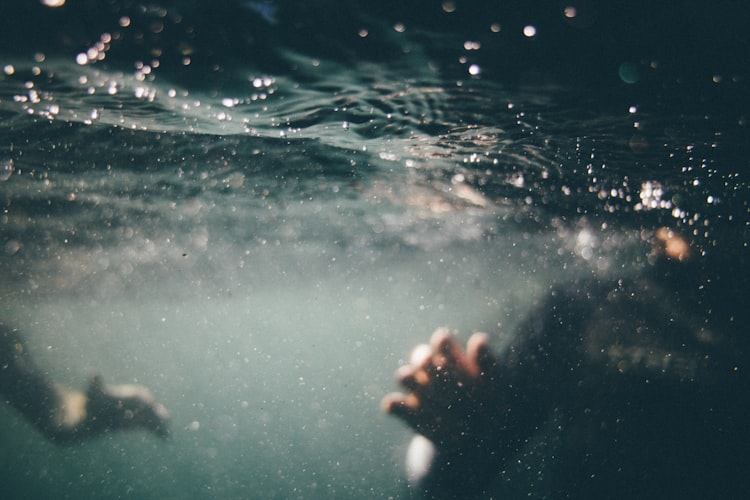
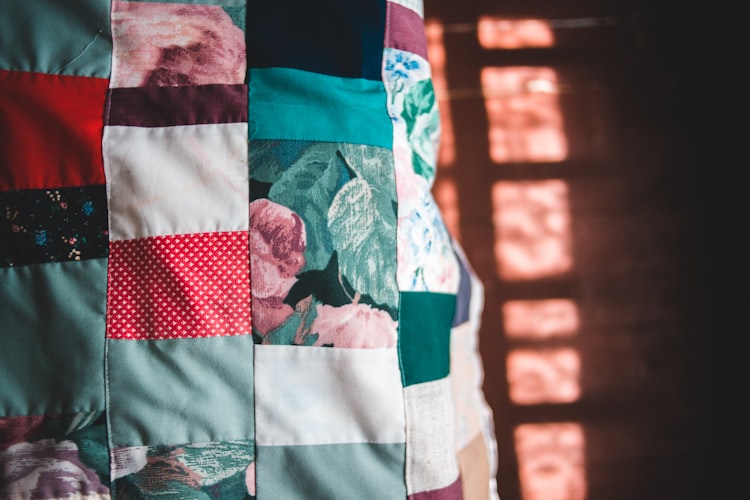
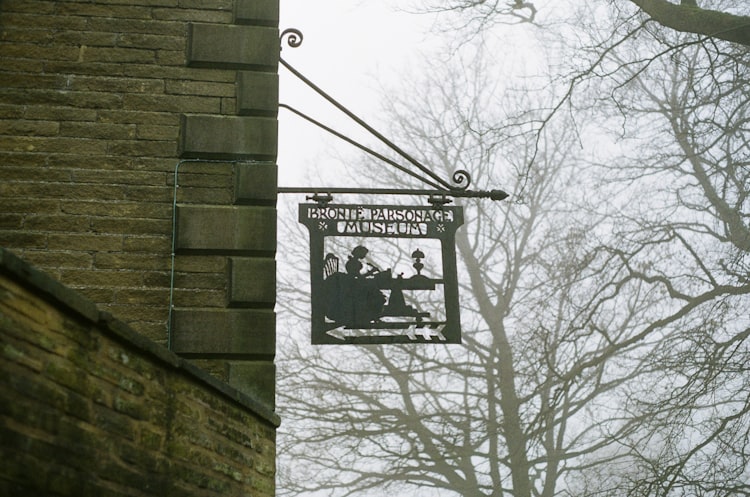
Member discussion